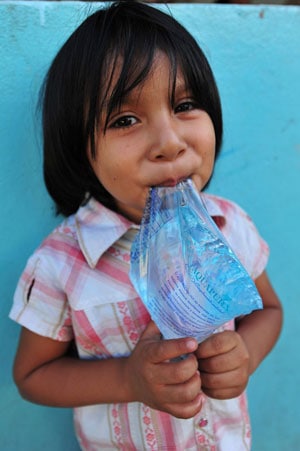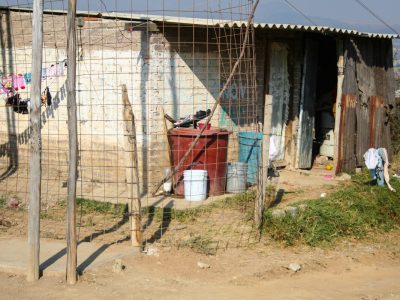
What Is Life Like for Mexico’s Suburban Poor?
Our child development centers are distributed in different types of settings in Mexico; the biggest difference is between urban and suburban areas. In the context of this blog post, the term “suburban” is defined a bit differently than in the developed world: Suburban areas are smaller cities or towns, normally located on the outskirts of main cities, with at least 5,000 inhabitants, but with few services.

What Is Life Like for the Urban Poor in Mexico’s Cities?
Our child development centers are distributed in different types of settings in Mexico; the biggest difference is between urban and suburban areas.
In the context of this blog post, the terms “urban” is defined a bit differently than in the big cities of the developed world: An urban area corresponds to small communities concentrated in cities with more than 10,000 inhabitants, with the majority of public services at hand.
Child Sponsorship: How Do We Choose Which Children to Register?
No more than three children from the same family can be registered in our Child Sponsorship Program, though each country may choose to limit this to fewer children so they can help a larger number of families.
Risks Remain Large for Kenyan Children
While the East African nation of Kenya does not grab as many headlines as its less stable neighbors to the west, disease, malnourishment and violence are leaving a mark on this generation of Kenyan children.
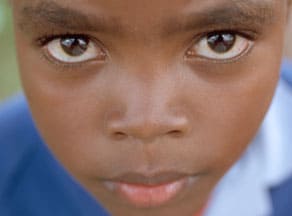 About 500,000 Kenyan children are missing school due to lack of food.
About 500,000 Kenyan children are missing school due to lack of food.
According to the World Food Program, in countries where school attendance is low, the promise of at least one nutritious meal each day boosts enrollment and promotes regular attendance. Where that is not offered, hunger interferes with the children’s concentration in class, affecting class performance. As famine takes its toll across the country, a growing number of students are staying away from school altogether to help their parents look for food (The Standard, Sept. 23, 2009).
Drought and famine have led to an increase in the high school dropout rate primarily in schools in the Njoro and Nakuru areas. While 29 percent of children in Nairobi are malnourished, that number increases to 42 percent in the Eastern Province (Daily Nation, Oct. 7, 2009).
The United Nations Scientific and Cultural Organization (UNESCO) has stated that malnutrition is the major barrier to universal primary education in Kenya.
Famine conditions have also affected livestock in the rural areas of Kenya, undermining the primary source of income for pastoralists, especially the Maasai population. (more…)
What Does God Want From Me?
![]() Jesus is traveling with a crowd, teaching as He walks. A blind man sitting by the road hears the passing commotion and asks what is going on. When he learns that Jesus of Nazareth is near, he calls out, “Jesus, Son of David, have mercy on me!”
Jesus is traveling with a crowd, teaching as He walks. A blind man sitting by the road hears the passing commotion and asks what is going on. When he learns that Jesus of Nazareth is near, he calls out, “Jesus, Son of David, have mercy on me!”
Several times the man calls out, even louder after some in the crowd tell him to be quiet. “Son of David, have mercy on me!”
Jesus stopped and ordered the man to be brought to him. When he came near, Jesus asked him, “What do you want me to do for you?”
– Luke 18:40-41 (NIV)
I am that blind man calling out to God.
Encourage me. Strengthen me. Provide for me. Comfort me. Save me. Give me. Help me.
That’s what I want.
What do you think these kids want? What are they crying out for?
Fifty kids in Haiti. All at the same center. All need God’s love. All need God’s mercy.
How about you? What are you calling out to God for?
All the while we cry out, God is calling out to us. Follow me. Be like me. Share my love.
Is it possible that my needs and your needs complement these kids’ needs? That we offer one another an opportunity to give God what He wants?
Always Picked Last (Extreme Poverty Style)
Imagine a world where you grow up with a mommy and a daddy and live in a nice warm house with your family.
You have your own bed, and sleep each night with a full belly. You go to school, and in the afternoon you go to sports practice on a green grassy lawn that is safely guarded from speeding cars and other dangers.
Imagine a world where your toys are bought from Wal-Mart, and you get a new Christmas, Easter and birthday outfit every year.
That’s not very hard to imagine … is it? Most of us grew up in that setting — or one very similar.
The situation that is hard to truly grasp is living in the circumstances the children in our sponsorship program live in.
We’ve seen the pictures; some of us have had the chance to see poverty firsthand. The reality the children in our sponsorship program live in is mostly the opposite of ours.
While some children are blessed with both parents still living, many live with other family members or older siblings. They eat one meal a day *maybe*, and play with toys that they find in the trash dumps outside their wood-walled, tin-roofed, one-room shanty.
 So imagine how it brightens a child’s day when he or she goes to the child development center and receives a letter from you — the sponsor.
So imagine how it brightens a child’s day when he or she goes to the child development center and receives a letter from you — the sponsor.
Now imagine a child who doesn’t have a sponsor. When all the children receive letters at the center, one never comes for this child.
This child, Carlos from Colombia, was registered into the sponsorship program in April, 2008, and has never — I repeat NEVER — had a sponsor.
What questions do you think run through his head when he attends the center during letter-writing and receiving time? What would run through your mind?
“Wait!” You say. “Doesn’t the sponsorship program still provide Carlos everything he needs? He is registered, after all.”
Let me see if I can explain. (more…)
You Give Them Something to Eat
It seems we, as humans, are always passing the buck, or bucking the responsibility.
Jesus replied, “They do not need to go away. You give them something to eat.”
“We have here only five loaves of bread and two fish,” they answered. — Matthew 14:16-17, NIV
Jesus saw the multitude and that the multitude was hungry. His attitude was not to leave their well-being up to someone else. He took responsibility and He wanted His disciples to assume this responsibility as well.
His disciples, however, could not see past their own limitations.
“We don’t have enough food for all these people” and “we don’t have the money to buy food for all these people” were the excuses Jesus heard.
The disciples wanted to send the hungry people away to fend for themselves, passing the responsibility of feeding the hungry back onto the hungry themselves.
Jesus, however, was not deterred by the physical limitations of the situation. He had bread the disciples didn’t understand. He understood the limitless nature of God’s provision, a provision not encased in the physical reality around us, but in the supernatural reality of God.
Is our response not much the same as the disciples when we are confronted with the need of the hungry? (more…)
What Happens After a Hurricane Hits My Child’s Country?
Many of you have asked about the impact Hurricane Ida had on your children as it moved through El Salvador. As we receive specific details from the El Salvador office about they’ve been affected we will contact you.
The good news is that no children were physically hurt. But we understand that you want more information.
Here’s an “on the ground” perspective from Shaun Groves and the Compassion Bloggers.
What happens when a hurricane hits the U.S.?
Telethons. Thousands donated.
FEMA. Thousands housed.
Hospitals. Thousands healed.
Insurance. Thousands rebuild.
What happens when a hurricane hits a house made of mud?
When earth by the ton gives way and slides through a neighborhood?
When beds, clothes, and families are swallowed up by flood waters and mud?
What happens when all this happens in a small village in the smallest nation in Central America? With almost no government resources? Without insurance and a hospital nearby or a car to visit it? What happens then?
The Church happens.
Read what that means on Shaun’s blog. And watch the video he included in the post.
Compassion Bloggers: Live Video Chat From El Salvador
You’re invited to a live video chat from El Salvador with the Compassion Bloggers.
It’s taking place on Wed., Nov. 11 at 9 p.m. CST at www.livestream.com/compassion.
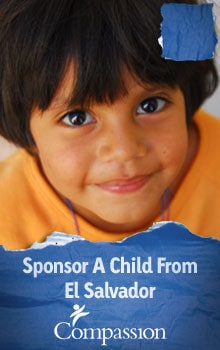
Opportunity Knocking: Knockout the Poverty Bullies
Will you respond when calamity knocks? When a poor child has no defenses? When she’s cornered by the bullies of poverty?
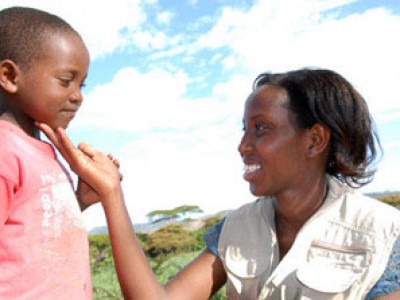
Child Sponsorship Is Not in Vain
My name is Peninah Esianoi Pashile. I was a sponsored child at Imaroro Child Develoment Center in Kenya. I would like to share my story with you and hope that it will be an inspiration and encouragement.
Do You Sponsor a Child in El Salvador?
More specifically, do you sponsor a child in one of these three child development centers in El Salvador?
- ES526, Bethel Student Center
- ES808, Cachorros de León Student Center
- ES782, Comisión de Amor Student Center
If you do sponsor a child in one of those three centers, let us know. These are the centers that the CompassionBloggers will visit next week, and we have someone going who is willing to TRY to get a photo of your child for you.
We can’t guarantee success, but we will do our best.
Please don’t leave your child’s name or number in your comment. Just let us know you have a child at one of the centers and someone will contact you via e-mail to get the information. Or you can send us your information via our contact form.
From Nov. 9 to 13, four bloggers will witness firsthand how we minister to the poor of El Salvador. Visit CompassionBloggers.com daily to travel with them through their stories, pictures and videos.

Use this code to post the banner on your blog.

